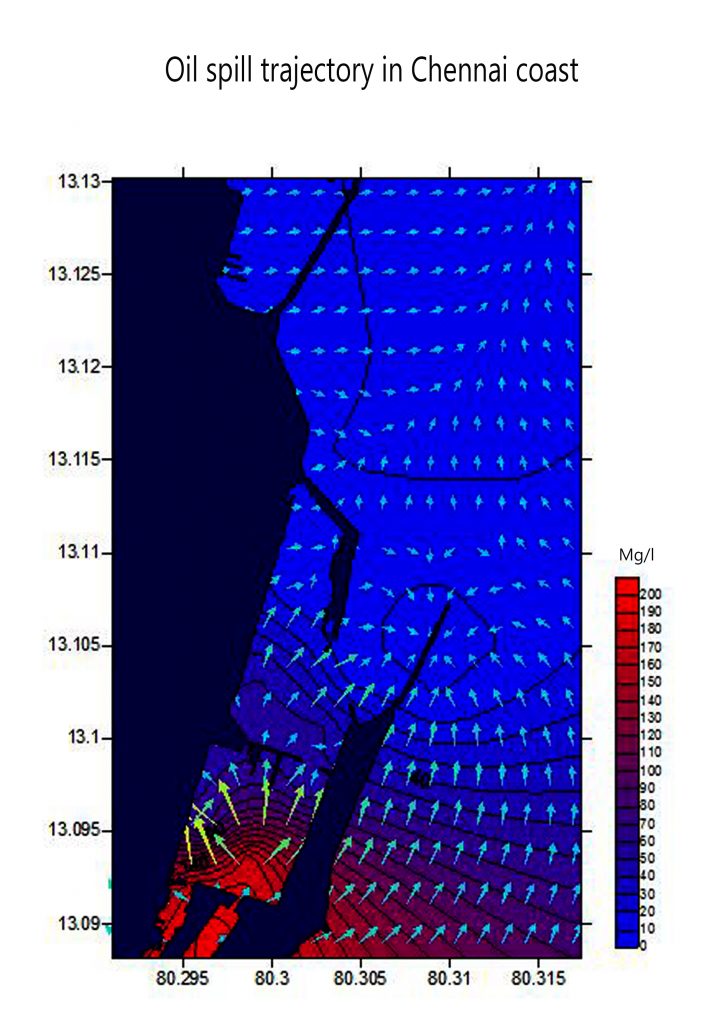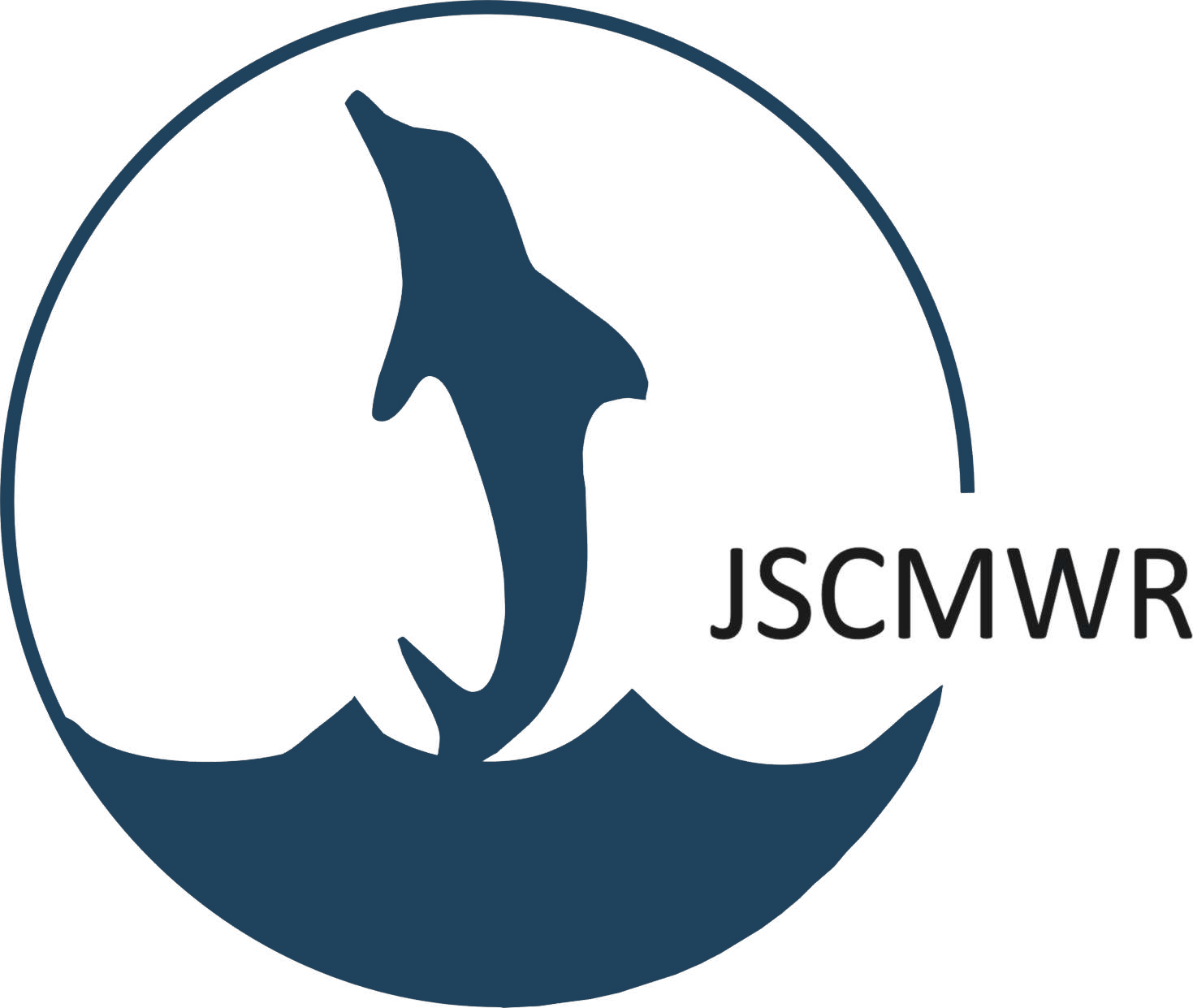Oil Spill and its Trajectory in Chennai coast
Oil and grease were estimated in twenty sampling points in and around the Chennai harbour. The study revealed that st.1 and st. 3 recorded with above 170 mg/l. High oil content in these stations is the reason of oil terminals in the harbour might have caused oil slick while transportation. Trajectory model showed that spill of the oil migrating towards open water and also investigated that spill movement were greater in St. 1 to St. 4. Spills have converged in the entry of harbour could be clearly declared in the trajectory maps. The minimum temperature was found as 26 OC and maximum of 29OC in. The reason is that mixing of temperature with wat er would be lower inside the harbor. Depth of the harbour was varied from 75 to 1450 cm in the present study. Present study revealed that depth never play major role in the trajectory of spill. Salinity in all the stations was extreme of 31 ppt and lower of 39ppt. Hike was noticed inside the harbor showed high correlation with temperature due to absence of visiting tidal waters caused higher salinity. The pH fluctuated between from 8.1 to 9. The pH recorded fully alkaline. The results showed that one isolates were short Gram Negative rods, Pseudomonas and coma shaped negative rods vibrio and the other isolate were Gram Positive cocci , Staphylococcus sp. The colonies Golden yellow colour colonies were observed in mannitol salt agar. Gram positive cocci in clusters were observed in Grams staining. Nutrient agar-Pseudomonas – Green colour colonies were observed. Gram negative short rods were observed in Grams staining Tcbs – Vibrio – Yellow colour colonies were observed. Comma shaped gram negative rods were observed in Grams staining.18 species were diatoms (Bacillariophyceae), 8 species were dinoflagellates (Dinophyceae), 2 species were blue greens (Cyanophycea) and 1 species were green algae and a total of 19 species of zooplankton recorded in all twenty sampling points under 7 major groups were identified. The species, Chaetoceros compessus, Chaetoceros curvisetus, Coscinodiscus radiates, Coscinodiscus gigas, Nitzschia longissima, Planktoniella sol, Pleurosigma elongatum were occurred in twelve sampling points showed maximum spatial distribution and Navicula showed highest distribution in the harbor. The density of phytoplankton varied from 10,191 to 59,447 no/l. The density of zooplankton varied from 339.027 to 3057.248 no/l. comparatively, density of plankton were low in the harbor waters. Further details, Pl contact us
er would be lower inside the harbor. Depth of the harbour was varied from 75 to 1450 cm in the present study. Present study revealed that depth never play major role in the trajectory of spill. Salinity in all the stations was extreme of 31 ppt and lower of 39ppt. Hike was noticed inside the harbor showed high correlation with temperature due to absence of visiting tidal waters caused higher salinity. The pH fluctuated between from 8.1 to 9. The pH recorded fully alkaline. The results showed that one isolates were short Gram Negative rods, Pseudomonas and coma shaped negative rods vibrio and the other isolate were Gram Positive cocci , Staphylococcus sp. The colonies Golden yellow colour colonies were observed in mannitol salt agar. Gram positive cocci in clusters were observed in Grams staining. Nutrient agar-Pseudomonas – Green colour colonies were observed. Gram negative short rods were observed in Grams staining Tcbs – Vibrio – Yellow colour colonies were observed. Comma shaped gram negative rods were observed in Grams staining.18 species were diatoms (Bacillariophyceae), 8 species were dinoflagellates (Dinophyceae), 2 species were blue greens (Cyanophycea) and 1 species were green algae and a total of 19 species of zooplankton recorded in all twenty sampling points under 7 major groups were identified. The species, Chaetoceros compessus, Chaetoceros curvisetus, Coscinodiscus radiates, Coscinodiscus gigas, Nitzschia longissima, Planktoniella sol, Pleurosigma elongatum were occurred in twelve sampling points showed maximum spatial distribution and Navicula showed highest distribution in the harbor. The density of phytoplankton varied from 10,191 to 59,447 no/l. The density of zooplankton varied from 339.027 to 3057.248 no/l. comparatively, density of plankton were low in the harbor waters. Further details, Pl contact us
